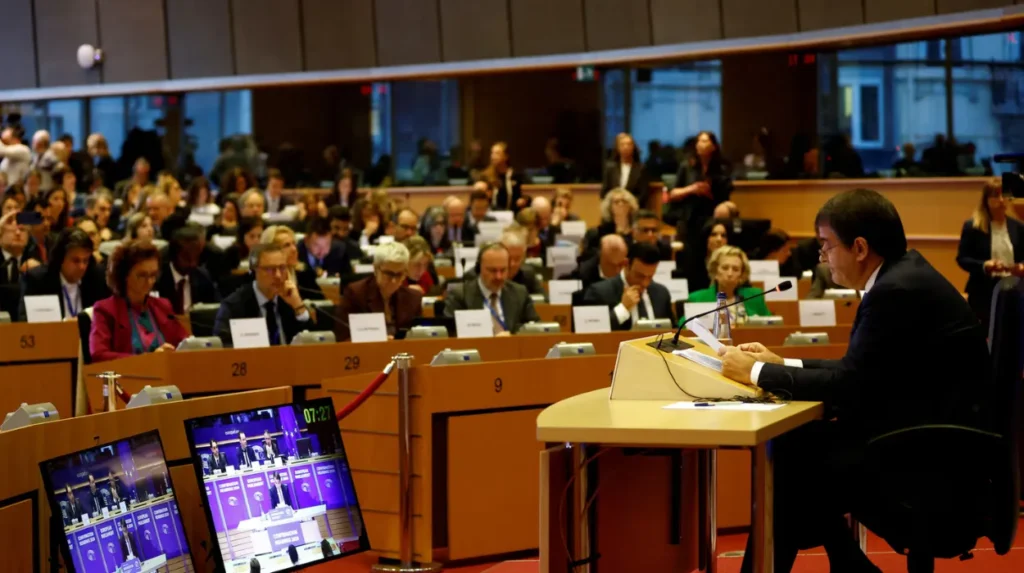Italy’s recent move toward imposing network fees on digital content delivery marks a significant development in the European digital landscape, potentially shaping rules under the upcoming EU Digital Networks Act (DNA). The Italian telecom regulator AGCOM’s decision to reclassify content delivery networks (CDNs) as “electronic communications networks” has stirred controversy across Europe, with industry bodies warning it risks establishing a precedent that could lead to mandated payments from global digital platforms to telecom operators.
This controversial classification subjects CDNs and similar digital infrastructure providers to dispute resolution mechanisms and potential fees under Italian telecommunications law, empowering large telecom companies to demand payment for network interconnection services that are typically provided free of charge.
The Computer & Communications Industry Association (CCIA Europe) criticized the approach as a “back door” to instituting network fees across the European Union, undermining the principle of an open and freely accessible internet. CCIA Europe warned that AGCOM’s stance is at odds with the recent EU-US trade agreement, which explicitly ruled out network fees on digital platforms.
Study Points to Broader Implications
A detailed study by Plum Consulting highlighted the far-reaching consequences of Italy’s regulatory move, predicting that once dispute resolution becomes mandatory in the IP interconnection market, it will institutionalize network fees via repeated legal conflicts between telecom operators and digital content providers.
The study revealed that this approach could push telecom companies to frequently initiate disputes against content delivery providers and other digital application services, resulting in paid peering agreements as legal precedents gradually accumulate across the EU.
Rather than resolving any genuine market failures, mandatory dispute resolution risks embedding fees into EU law through the Digital Networks Act framework. Plum Consulting emphasized that the current interconnection market in Europe functions efficiently, with fewer than a dozen disputes over the past decade—a signal that heavy regulatory intervention may be unnecessary and counterproductive.
Impact on EU Digital Policy and Market Dynamics
The Italian case serves as a litmus test for how the Digital Networks Act might be enforced continent-wide. By recognizing CDNs as electronic communications networks that can be charged fees by telecom operators, Italy potentially paves the way for a fundamental shift in how internet infrastructure is monetized.
This could significantly alter the existing balance where nearly 100% of peering between networks and digital content providers occurs on a settlement-free basis, thereby preserving an open digital ecosystem. Introducing mandatory fees threatens to disrupt these arrangements, potentially raising costs for digital platforms and, ultimately, end users.
The European Commission faces pressure to decide whether to embrace this regulatory model or uphold established principles favoring innovation and an open internet. Digital market stakeholders fear that adopting Italy’s approach EU-wide would invite fragmentation and stifle competition.
Italy’s Digital Services Tax Expansion Context
Italy’s move toward network fees complements its broader agenda to tax the digital economy more heavily. In 2025, Italy expanded its Digital Services Tax (DST) by removing local revenue thresholds and broadening the tax base. The DST imposes a 3% excise tax on gross revenues from digital advertising, platform services, and user data transmission generated in Italy, aiming to ensure large multinationals pay a fair share of taxes within the country.
The combined impact of Italy’s DST expansion and telecom regulator decisions signals an assertive national push to secure revenues and exert regulatory control over digital markets, setting an example for other EU member states.
Telecom Sector and Policy Maker Perspectives
CEOs of Europe’s top telecom companies have lobbied for dispute resolution mechanisms similar to Italy’s model, seeing paid peering as a potential new revenue stream to fund costly investments such as 5G rollouts and broadband expansion.
However, many digital companies and internet advocacy organizations argue that mandatory network fees would disrupt market efficiencies and increase frictions in an already complex ecosystem. They warn that these fees could be passed on to smaller digital companies and consumers, creating barriers to entry for innovation and undermining the EU’s digital single market goals.
The European Commission has yet to take a definitive stance on whether network fees should be allowed under the Digital Networks Act. The timing is crucial as EU policymakers prepare the legislative text to govern digital infrastructure, market fairness, and open access across member states.
Broader EU Digital Connectivity Initiatives
Italy’s regulatory and tax initiatives operate within a larger EU framework aimed at enhancing digital connectivity and infrastructure. The Italian Strategy for Ultra Broadband and related 5G deployment plans, backed by billions in funding, demonstrate national efforts to improve digital access across urban and rural areas.
The Digital Networks Act, slated for finalization in the near term, seeks to harmonize digital infrastructure rules, promote competition, and ensure transparent access to network resources while balancing incentives for investment.
Italy’s network fee model is now being closely watched by other EU countries and industry stakeholders as a potential blueprint or cautionary tale for the future direction of the Digital Networks Act and digital regulation in Europe.
Italy’s trailblazing stance on network fees and its expanded digital services tax policy represent a significant turning point for European digital regulation. While Italy aims to capture more value from digital services and infrastructure using existing legal frameworks, industry observers worry that this path could fragment the digital economy and erect new financial barriers for digital innovation.
The European Commission’s upcoming decisions on the Digital Networks Act will be crucial in determining whether Italy’s model becomes the EU standard or whether the continent will protect an open internet ethos that has fueled decades of digital growth and integration.
As stakeholders assess the impact, the balance between fair cost sharing for network infrastructure and maintaining an open, competitive digital market remains the core challenge for European digital policy in 2025 and beyond.







